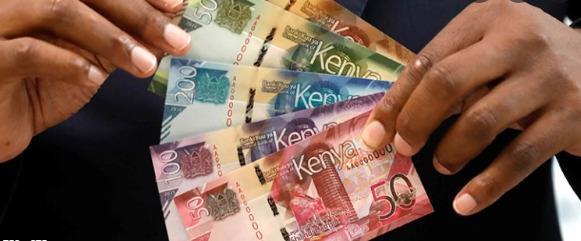The Kenya shilling depreciated by 0.7 percent against the US Dollar to close the month of July at Sh108.6, from Sh107.9 recorded at the end of June 2021, mostly attributable to increased dollar demand from general importers.
Data collected by Cytonn Investments further reveal that last week, the shilling depreciated by 0.4 percent against the US dollar to close the week at Sh108.6, from Sh108.2 recorded the previous week.
This was partly attributable to the build-up of dollar demand from energy importers as they meet their end of the month hard currency obligations.
On a year to date basis, the shilling has appreciated by 0.5 percent against the dollar, in comparison to the 7.7 percent depreciation recorded in 2020.
Despite the recent appreciation of the shilling, analysts from the investment firm expect the shilling to remain under pressure in 2021.
This will be as a result of several factors among them rising uncertainties in the global market due to the Coronavirus pandemic, which has seen investors continue to prefer holding their investments in dollars and other hard currencies and commodities.
It will also be as result of the widened current account position which increased by 0.2 percent points to 5.4 percent of GDP in the 12 months to June 2021 from 5.2 percent of GDP for a similar period in 2020.
Lastly, the shilling could come under pressure due to demand from merchandise traders as they beef up their hard currency positions in anticipation for more trading partners reopening their economies globally.
The analysts note that the shilling will remain supported by several factors such as forex reserves.
Tz shilling stabilises against the dollar
According to the analysts, Kenya’s forex reserves, currently at USD 9.3 billion (equivalent to 5.7 months of import cover), which is above the statutory requirement of maintaining at least 4.0-months of import cover, and the EAC region’s convergence criteria of 4.5-months of import cover will support the shilling.
The shilling is also expected to be supported by improving diaspora remittances evidenced by a 6 percent year on year increase to USD 305.9 million in June 2021, from USD 288.5 million recorded over the same period in 2020, which has continued to cushion the shilling against further depreciation.
Similarly, a report by Deloitte reveals that the shilling remains under pressure against the dollar, deteriorating by 1.8 percent from an average of Sh106.0/USD as at 08 May 2020 to Sh107.9 as at 30 June 2021.

Forex Reserves & Diaspora remittances
This comes even as a report by Central Bank of Kenya reveals that Kenyans living and working abroad sent home US&1.75 billion (Sh189.4bn) between January and June of this year.
CBK said inflows increased by a fifth from Sh158.2 billion ($1.46 billion) received in a similar period, defying the persisting Covid-19 economic disruptions in the source markets.
Additional data shows that remittances from North America and Europe grew by 37.8 percent and 41.4 percent respectively to grow the overall inflows despite those from the rest of the world posting a 25.2 percent drop.
Money sent from North America, which includes Canada, the United States and Mexico reached Sh115.7 billion, marking 61.1 percent of total remittances up from 53.1 percent in the previous half-year.
Cash sent from Europe grew from Sh27.3 billion to Sh38.6 billion — an equivalent of 20.4 percent of all inflows. The rest of the world brought in Sh35.1 billion.
Uganda shilling weakens to 3month low
“Remittances were robust at USD305.9 million in June 2021, and were 20.4 percent higher in the first half of 2021 compared to a similar period in 2020. The current account deficit is estimated at 5.4 percent of GDP in the 12 months to June, and is projected at 5.2 percent of GDP in 2021,” CBK said last week.
In terms of reserves, data collected by Deloitte shows that the country’s foreign exchange reserves remained adequate at USD 9.5 billion (5.8 months of import cover) as at 30 June 2021.
Similarly, CBK revealed last week that its foreign exchange reserves, which currently stand at USD9,350 million (5.72 months of import cover), continue to provide adequate cover and a buffer against short-term shocks in the foreign exchange market.











